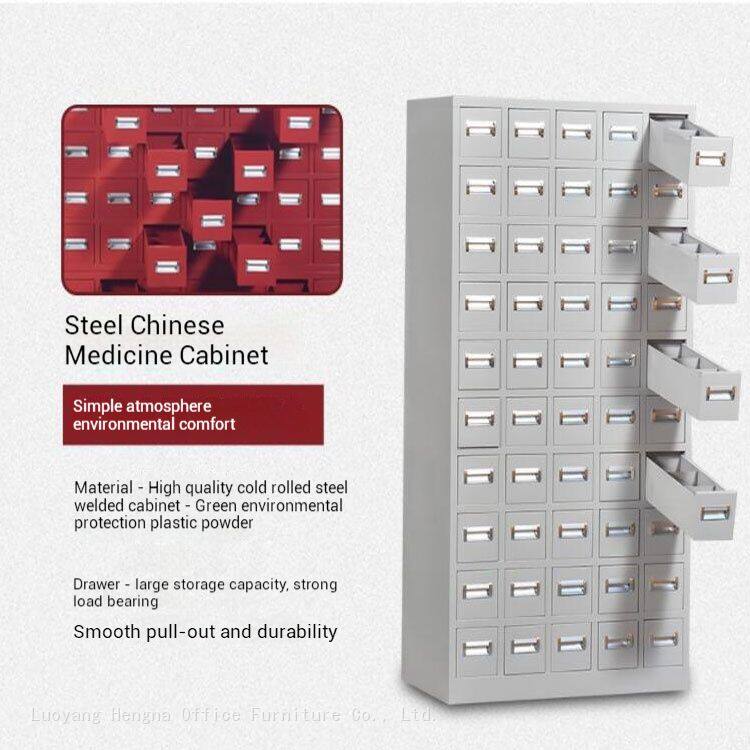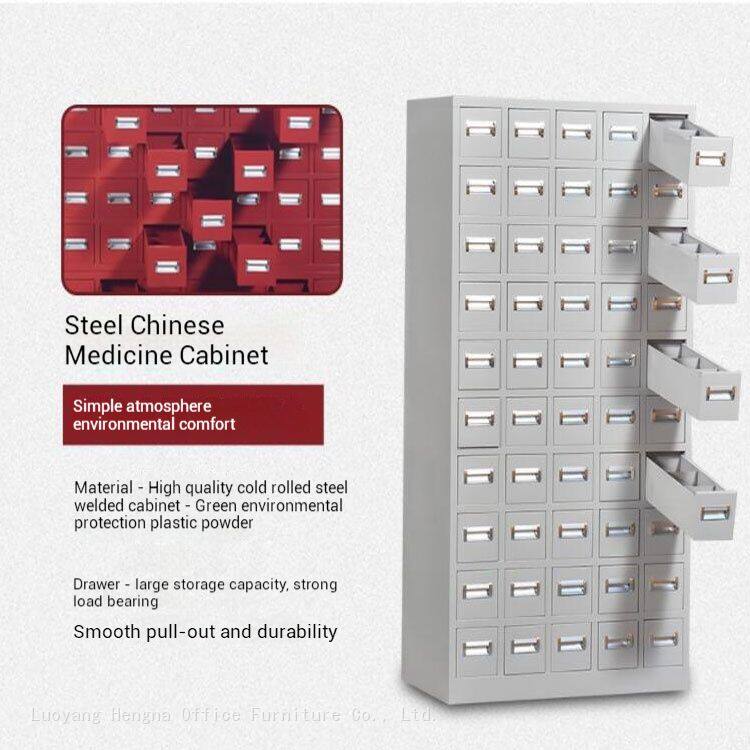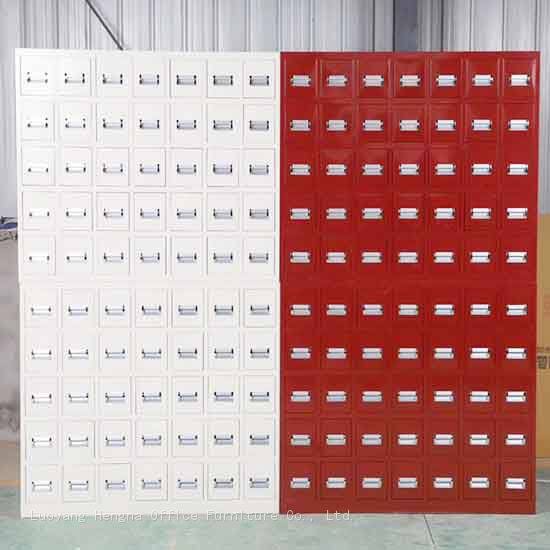-
 Sarah
Hi there! Welcome to my shop. Let me know if you have any questions.
Sarah
Hi there! Welcome to my shop. Let me know if you have any questions.
Your message has exceeded the limit.

How to Customize Herb Drawers and Labels for Professional TCM Clinics
2025-10-25 16:59:26
In traditional Chinese medicine (TCM) clinics, the organization of herbal ingredients is not just a logistical task—it’s a reflection of professionalism, efficiency, and respect for ancient healing traditions. For practitioners, customizing herb drawers and labels is a strategic investment that streamlines workflow, enhances patient trust, and ensures compliance with industry standards. This guide breaks down the key steps to create a tailored system that meets the unique needs of your clinic.
Why Customization Matters
Standard storage solutions often fall short for TCM clinics. Herbs vary in size (from tiny seeds like Semen Persicae to large roots like Radix Ginseng), shape, and frequency of use. Pre-made drawers may lack compartments, while generic labels can lead to misidentification. Customization solves these pain points by optimizing space, enhancing workflow, and reducing errors.
Step 1: Assess Your Clinic’s Needs
Before diving into customization, conduct a thorough audit:

Inventory Analysis
Herb Types: Categorize herbs by form (whole, sliced, powdered) and usage (frequently vs. rarely used). For example, whole roots need deeper drawers, while powders require airtight containers.
Volume: Count how many herbs you stock regularly. A busy clinic may need 200+ drawers, while a smaller practice could manage with 50–100.
Growth Plans: Anticipate future inventory expansion. Choose a drawer system that allows adding modules without replacing the entire unit.
Workflow Evaluation
Observe how staff retrieve and restock herbs. Do practitioners reach for certain herbs multiple times a day? Place high-frequency items in easy-to-reach drawers. Less commonly used herbs can go in higher or lower shelves.
Step 2: Design Custom Herb Drawers
Drawers are the backbone of your storage system. Here’s how to customize them for maximum efficiency:
Material Selection
Wood: Traditional and aesthetically pleasing, but prone to moisture damage. Seal with waterproof varnish if using in humid climates.
Stainless Steel: Durable, easy to clean, and resistant to pests/odor. Ideal for clinics prioritizing hygiene.
Plastic: Lightweight and affordable, but less durable long-term. Best for small clinics on a budget.
Compartment Configuration
Divide drawers into sections using removable dividers. This prevents cross-contamination and keeps herbs organized. For example:
Small Compartments: For seeds (Semen Plantaginis) or granules (Granulae TCM).
Medium Compartments: For sliced herbs (Radix Astragali slices) or bark (Cortex Magnoliae Officinalis).
Large Compartments: For whole roots (Radix Angelicae Sinensis) or branches (Ramulus Mori).
Accessibility Features
Pull-Out Mechanism: Use smooth-gliding slides (preferably soft-close) to prevent jars from tipping over when opening drawers.
Ergonomic Height: Position frequently used drawers at waist level to reduce strain. Store heavy items (e.g., bulk herbs) in lower drawers.
Step 3: Create Clear, Consistent Labels
Labels are your first line of defense against errors. Follow these guidelines for effective labeling:
Label Content
Include three key elements:
Herb Name: Use both Latin (Radix Glycyrrhizae) and common names (Gan Cao) for clarity.
Dosage Range: Note typical doses (e.g., “3–9g”) to assist practitioners.
Expiration Date: Track shelf life to ensure potency.
Label Design
Contrast: Use dark text on light backgrounds (or vice versa) for readability. Avoid fancy fonts—stick to sans-serif styles like Arial.
Size: Make labels large enough to read from arm’s length (at least 1 inch tall).
Color Coding: Assign colors to herb categories (e.g., red for warming herbs, blue for cooling herbs) to speed up retrieval.
Label Placement
Attach labels to the front of each compartment (not the drawer itself) so staff can see them even when the drawer is closed. Use waterproof adhesive or laminated labels to resist spills.
Step 4: Organize Drawers for Efficiency
A well-organized drawer system follows the “golden zone” principle—placing frequently used items within easy reach. Here’s how to structure yours:
Categorize by Function
Group herbs by their primary use:
Respiratory: ma huang, jing jie
Digestive: chen pi, sheng jiang
Circulatory: dan shen, hong hua
This reduces the time spent searching for herbs during consultations.
Alphabetize Within Categories
Within each functional group, arrange herbs alphabetically (by pinyin) to help staff locate items quickly—even if they’re unfamiliar with the herb’s properties.

Use Dividers for Bulk Herbs
For herbs sold in large quantities (e.g., fu ling or yi yi ren), add dividers to separate bulk stock from smaller, prescription-ready portions. This prevents cross-contamination and makes restocking easier.
Step 5: Maintain and Update Your System
Customization isn’t a one-time task—regular maintenance ensures your system remains effective:
Conduct Weekly Audits
Check for:
Low Stock: Flag herbs that need replenishing (e.g., “Only 5 packs of bai shao left”).
Misplaced Items: Return herbs to their correct drawers to avoid confusion.
Damaged Labels: Replace faded or torn labels immediately.
Train Staff on the System
New hires should receive a guided tour of the drawer layout and labeling conventions. Provide a cheat sheet (e.g., “Red drawers = respiratory herbs”) to reinforce learning.
Gather Feedback
Ask practitioners and admin staff for input: “Is there a herb you struggle to find?” or “Would larger drawers help with bulk herbs?” Use this feedback to refine your system over time.
Why Customization Matters for TCM Clinics
A tailored herb drawer and labeling system does more than organize inventory—it builds trust. Patients visiting a TCM clinic expect precision, and a well-organized storage area signals that your clinic values quality and care. For practitioners, it reduces stress during busy appointments, allowing them to focus on what matters most: treating patients.
By following these steps, you’ll create a system that’s not only functional but also a reflection of your clinic’s commitment to excellence in traditional Chinese medicine. Whether you’re a seasoned practitioner or just starting out, investing in customization is an investment in your clinic’s success.
Tags: Customize Herb Drawers and Labels, Herb Drawers and Labels for Professional TCM Clinics

